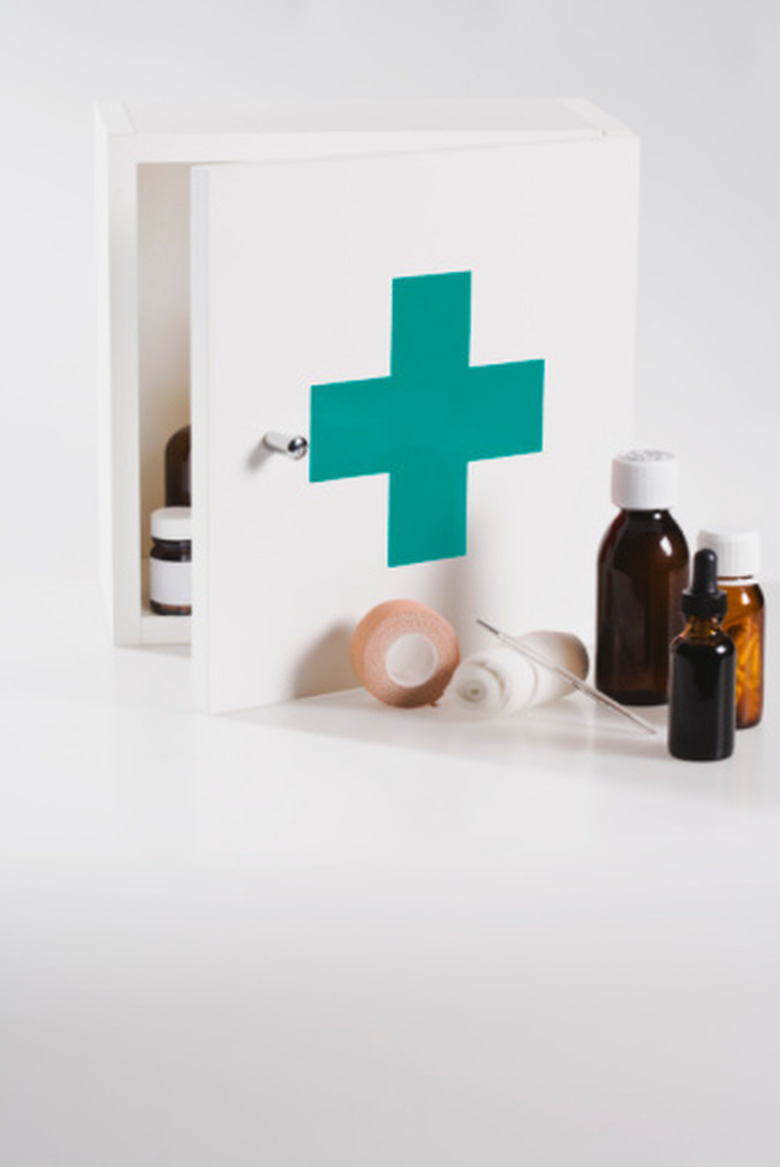Properties Of Isopropyl Alcohol
Isopropyl alcohol, or 2-propanol, is sold as rubbing alcohol in many supermarkets and drugstores. It belongs to a class of organic compounds called alcohols, all of which are distinguished by an -OH group attached to their carbon chain. Many of isopropyl alcohol's physical properties resemble those of other similar short-chain alcohols.
Physical Properties
Physical Properties
Thanks to its -OH group, isopropyl alcohol molecules can form weak bonds, called hydrogen bonds, that help hold the molecules together. Consequently, it has a much higher boiling and melting point than propane, which also contains three carbons and eight hydrogens. The boiling point of isopropyl alcohol is 82 degrees Celsius; its melting point is -89 C. Its boiling point is lower than that of 1-propanol (propyl alcohol). The density of pure isopropyl alcohol at room temperature is about 78.6 percent of the density of water at the same temperature.
Behavior in Solution
Behavior in Solution
Isopropyl alcohol mixes very well with water; rubbing alcohol sold at drugstores, for example, is a mixture of 2-propanol and water. The acidity of a compound is often measured in terms of its pKa, in which lower numbers denote higher acidity. Isopropyl alcohol has a pKa of 17.1. It is an extremely weak acid — weaker than water, which has a pKa of 15.7.
Chemistry
Chemistry
Isopropyl alcohol is flammable both in liquid and vapor form. Exposure to oxidizing agents like chromic acid will convert isopropyl alcohol into acetone, while exposure to heat and concentrated sulfuric acid can dehydrate isopropyl alcohol to form propene. Strong bases can tear the hydrogen ion off isopropyl alcohol to form isopropoxides, which are strong bases and may be useful in some organic syntheses. Reacting isopropyl alcohol with phosphorus tribromide will replace the alcohol group with a bromine atom.
Solubility Considerations
Solubility Considerations
Isopropyl alcohol has a lower dielectric constant than water or ethanol, meaning it has a poorer ability to shield opposite charges and keep them separated. Consequently, adding isopropyl alcohol to a salt solution containing DNA or RNA will help precipitate the DNA or RNA because positively charged ions from the salt and the DNA molecules can come together to form aggregates and fall out of solution. Isopropyl alcohol is likewise less soluble in saltwater than in pure water.
References
- "Organic Chemistry, Structure and Function"; Peter Vollhardt, et al.; 2011
- "Biochemical Techniques, Laboratory Manual"; Aaron Coleman, et al.; 2010
Cite This Article
MLA
Brennan, John. "Properties Of Isopropyl Alcohol" sciencing.com, https://www.sciencing.com/properties-isopropyl-alcohol-8299115/. 24 April 2017.
APA
Brennan, John. (2017, April 24). Properties Of Isopropyl Alcohol. sciencing.com. Retrieved from https://www.sciencing.com/properties-isopropyl-alcohol-8299115/
Chicago
Brennan, John. Properties Of Isopropyl Alcohol last modified March 24, 2022. https://www.sciencing.com/properties-isopropyl-alcohol-8299115/
